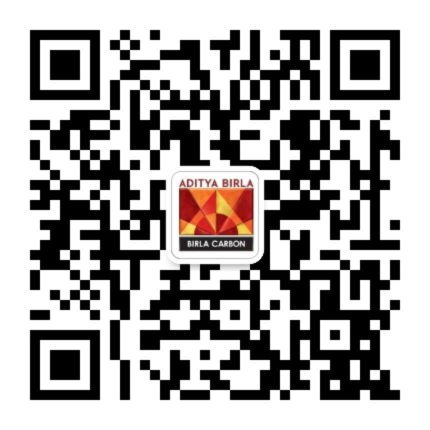STANDING FIRM ON SHIFTING GROUND
The bonds that bind us are real. During difficult periods, our commitment to each other and the communities we serve is the deepest source of our strength.
When the Arab Spring first erupted in Egypt in 2010, chaos came with it to Birla Carbon’s Alexandria plant. With the uprising cutting off the flow of goods, dismantling infrastructure, and at points dissolving into complete anarchy, the company needed to decide whether to evacuate the plant for the safety of our employees.
But the employees were not only committed to keeping the plant open—in an act of allegiance, they refused to leave. Though many of the employees were ex-pats, they chose to remain in solidarity with the people of Egypt. And because of that stand, Birla Carbon stood with them. The company even moved families in need from Alexandria to their plant guesthouse, refusing to turn its back when support was needed most. During this historically tumultuous time, the spirit of Birla Carbon was one of unity—of bonds that won’t break, even when the world around us is coming apart.
A DRIVE FOR
INNOVATION
In the early years, B.F. Goodrich Company tires were white. But when the company began experimenting with “Silvertown” tires to change up their look, they discovered that the tread rubber was not just gray—it also had a longer life.
The Silvertown manufacturer had been using a small amount of Binney & Smith carbon black to give its tires their tint, and Goodrich discovered that increasing the amount bound the rubber particles together, making the tires stronger. So in 1911, they put out a request for a manufacturer that could produce an annual supply of one million pounds of carbon black.
Binney & Smith took on that challenge, forming the Columbian Carbon Company in response. By searching for a more in-depth understanding and imagining a better way, they soon developed and patented the formula for creating carbon black in pellet form, which allowed them to produce more significant quantities.
The value Binney & Smith brought to the B.F. Goodrich Company was worth more than the 280,000 tons in volume they delivered. Through their willingness to work together and exchange expertise, they promoted their partnership. And by consistently pushing beyond the limitations of the pigment, together they created a tire that could make mobility more practical, more affordable, and more accessible— benefitting the lives of millions.
A LONG-SOUGHT LOOK
It’s been over 75 years since our historic installation of one of the world’s first industrial electron microscopes—but it’s an invention that keeps innovating.
The electron microscope was a revelation—literally. Before it, no one had seen the structure of carbon black. It was a long-sought look into the mysteries of what makes carbon black strong. With this powerful tool in hand, what we discovered we shared with the world, revolutionizing our industry and leading the way forward.
Decades later, our customers say that our carbon black identification technology (CB ID) is still the best in the industry, and we gladly share our process with them to this day. Some have even visited our lab to get a look into the microscope themselves. To them, and to us, it’s still just as much of a revelation as it was in 1941.
WELCOME TO
THE FAMILY
“When you are back home, tell your teams—not a single man or woman will be turfed out. You are now part of our extended family.”
This was the message sent during the integration of Birla Carbon and Columbian Chemicals in 2011. And it was sent not just in English, but in every language, the employees spoke, from Korean to Hungarian, which was a message of its own: who you are is valued here. For us, global impact comes from celebrating regional strengths.
Because of that commitment, it felt not like an acquisition but a partnership. Though Columbian Chemicals was once a big competitor, rather than forcing adaptation and assimilation, we insisted on mutual collaboration, trusting the experience and expertise of our new teams in the regions they called home. And like any true partnership, that trust and respect were returned in equal measure. A family of many strengths, now stronger.
DURABLE INVESTMENTS
Because we take the long-term view, we focus on potential over profit. We see that to be a real resource to the communities we serve; we must be resourceful in how we support ourselves.
That mindset is why we are a proud member of the World Business Council for Sustainable Development. It’s why, in 2015, we launched deep investments in our plant sanitation systems as part of the WBCSD’s Water, Sanitation, and Hygiene agenda—investing over $180,000 in Renukoot alone to construct a system that upgraded our water sanitation systems. This change allowed us to reuse the treated water in our cooling towers, making our facility a self- contained resource, as well as improving the well-being of our employees.
And we are always committed to doing more than what is asked of us. That’s what our Action 2020 business sustainability agenda is about—not only to strengthen our position as an industry leader but to make the places we call home more durable for generations to come.
MAKING BLACK TIRES GREENER
Reducing the environmental impact of automobiles is an urgent cause—and looking through a lens that anticipates future needs means looking at every problem with an eye to how we can help.
If cars need to be more fuel efficient, can we find a way to make tires more fuel efficient? Our determination to answer that question with a “yes” led Birla Carbon to develop next- generation functionalized carbon blacks to meet the changing demands on fuel efficiency and sustainability. This technology also led us explore material synergies with potential bio-renewable fillers such as nanocellulose combined with advanced carbon blacks with the goal of improving tire performance through lower rolling resistance.
This is a massive project with the aim of answering two critical needs: the needs of our customers, and the needs of the generations who will inherit the environment we leave them. But projects like this are what we’re made for. Because for us, sustainability means both adaptation and conservation—evolving with our customers and protecting the planet we all share.
UP FOR
THE CHALLENGE
Being a female leader in a male-dominated industry can be a challenge. But we love a good challenge here.
One such female leader, upon joining Birla Carbon, initially faced hesitation from her manager about visiting specific plant sites due to the perception of women in those cultures. But she was passionate about the influence she could have in the company and determined to let nothing stop her. And when she told her manager this, that she felt she could be useful and wanted a chance to try, he embraced the challenge as well, immediately agreeing.
So, the woman met with the plant leaders, and one-by-one she earned their respect. They began to approach her directly with their concerns. They trusted her because they experienced first-hand her determination and grit. They knew that if she didn’t know how to get it done, she would find the way forward. Even today, she says the relationships she made during that time have been the most rewarding of her career. With her manager’s support, her strength shone brightest when it was tested—and she made the company all the stronger for it.
OUR TRUE COLOR
We have the chemical makeup of curiosity—a history of colorful imaginations.
Two of our founders, Edwin Binney and C. Harold Smith, began their business creating pigments in the black and red color ranges, such as lamp black, charcoal, and a red iron oxide paint used to coat barns across America. When a new, stronger, and more intensely black pigment than any other was discovered in the Pennsylvania oil rush, they were quick to transform their process to produce it at scale, securing their spot as a global industry leader and strengthening the foundation our company stands on today.
But success was not a reason to stop exploring. Their most beloved legacy was yet to come. One evening, Binney’s wife Alice, a former schoolteacher, spoke with her husband about using the Binney & Smith formula to create a product that would encourage and promote the arts within schools. So they worked together and manufactured 8-pack boxes of wax crayons that became the brand Crayola.
By sharing the strength of their product in an entirely new way, they encouraged generations of children to imagine a more colorful world.
DRAWING ON OUR STRENGTHS
Since the days of cave paintings, people have used carbon black to tell stories. This year, we’re interpreting that legacy in a new way, sharing the strength that matters by sharing a story that matters.
Birla Carbon Spain recently became an allied member of AMARA Cantabria (The Association of Parents of Children with Cancer). To contribute to that mission of support and outreach, they’re helping to create forums and activities that raise awareness of the challenges families face after a pediatric cancer diagnosis. But the project that perhaps means the most is the sponsorship of an illustrated children’s book that will help make talking about childhood cancer a little more comfortable for children, families, and schools.
By sharing our resources as well as our heritage in telling and printing stories, Birla Carbon Spain is helping to make a significant impact in a small town, and to make these families a little bit stronger in a time they need strength most.
GROWING
PROSPERITY
When Birla Carbon plants a seed within the communities it inhabits, the strength we share keeps growing.
Since 2014, the South Asia and Middle East region has provided seeds to the tribal communities near Patalganga to encourage their livelihood and help them grow secure in their own right. Selling ladyfingers and other seasonal vegetables like pumpkin, brinjal, and bitter gourd provide these families with much-needed income to support themselves and their neighbors.
In 2016, one of the farmers, Ananta Pawar, used the resources he’d earned from this seed project and took a bold step to expand his business to a larger scale. He leased barren wasteland in a nearby village, and with the help of his family, cleaned and modified the land to cultivate vegetables. He produced enough ladyfingers to sell the surplus on the wholesale market, and soon he was able to invest back into his community by hiring neighbors and purchasing the transportation he needed to turn his dream into a thriving business.
Today, Ananta Pawar is an inspiration to the people of Patalganga to transform their own lives. And so he shares with them an even greater strength, grown from the seeds we first shared with him.









